About the Church
 |
 |
 |
 |
 |
 |
 |
The Holy Mass - Part XVII
The Final Leonine Prayers
The Ite, Missa est
has been pronounced, the Last Gospel read, and the Mass is ended. At Low Masses, however, the priest descends the steps of the altar, kneels and leads the faithful in the recital of the Prayers after the Low Mass, better known as the Leonine Prayers.
These prayers have a very significant history, unknown to many Catholics today, since they are no longer said in the Novus Ordo liturgy that replaced the Roman Tridentine rite. It is worthwhile to know and appreciate their importance.
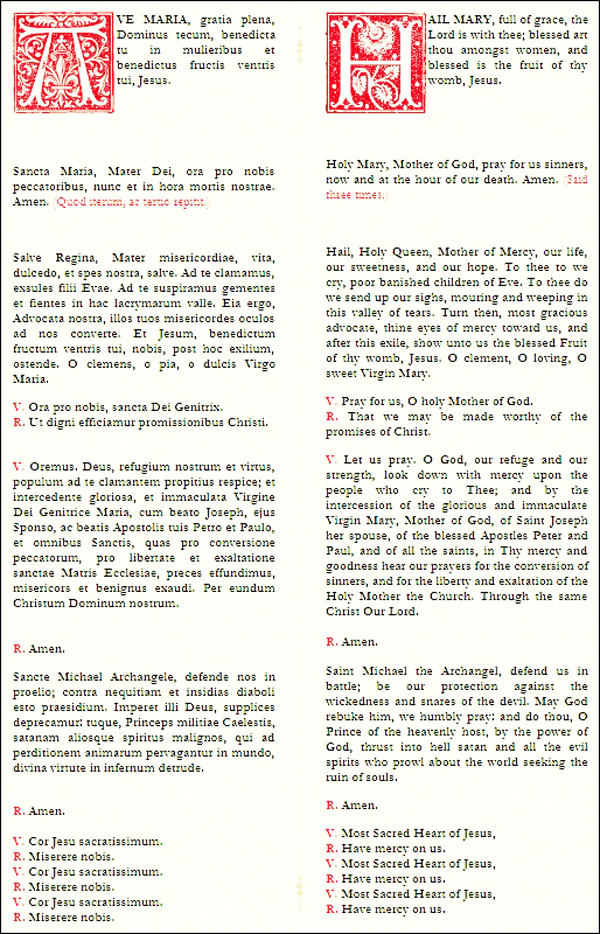
History
The prayers after the Low Mass are public intercessory prayers for the needs of the Church. Although they are referred to as the Leonine Prayers, they did not totally originate with Pope Leo XIII, after whom they are named.
In 1859 Pope Pius IX ordered public prayers – specifically, three Hail Marys, the Salve Regina, a versicle and a collect – to be recited after Mass in all churches in the Papal States, which were under attack by revolutionary leaders at the service of Masonic secret societies. In fact, Rome fell to the revolutionaries, the Papal Territories were seized by them and Pope Pius IX was allowed to stay at the Vatican. In face of this situation the Pope declared himself to continue to dwell there as a "prisoner."
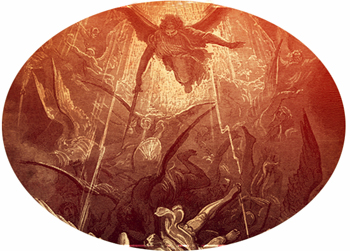 By the 1880s, anti-clerical mobs, goaded on by the Masonic lodges, were demonstrating against Pope Leo XIII and even attempted to throw the remains of Pius IX into the Tiber. On January 6, 1884, Leo XIII decreed that these prayers prescribed by Pius IX should be recited after Low Mass in churches throughout the world for the intention of protecting the Church's temporal sovereignty in this crisis.
By the 1880s, anti-clerical mobs, goaded on by the Masonic lodges, were demonstrating against Pope Leo XIII and even attempted to throw the remains of Pius IX into the Tiber. On January 6, 1884, Leo XIII decreed that these prayers prescribed by Pius IX should be recited after Low Mass in churches throughout the world for the intention of protecting the Church's temporal sovereignty in this crisis.
Two years later, in 1886, Pope Leo XIII added the Prayer of St. Michael to these prayers recited after Mass. This came as the result of a vision he had one day after celebrating a Mass where he saw Satan and his cohorts wreaking destruction in the Holy Church. In the midst of the horror, St. Michael the Archangel appeared and cast Satan and his legions into the abyss of Hell.
Soon afterwards Pope Leo XIII composed the Prayer to Saint Michael, later shortened to the form we all know. He added this prayer to the prayers of Pius IX after Mass and ordered that they should be said after all Low Masses as a protection for the Church against attacks from Hell. This is how the prayers after Mass took the name Leonine Prayers.
It was Pope St. Pius X who ordered in 1904 that at the conclusion of the Leonine Prayers a threefold invocation be said, "Cor Jesu Sacratissimum, miserere nobis" [Most Sacred Heart of Jesus, have mercy on us].
For the conversion of Russia
Peace was finally established between the Pope and Italy with the signing of the Lateran Treaty in 1929. The Leonine prayers continued to be said after Low Masses.
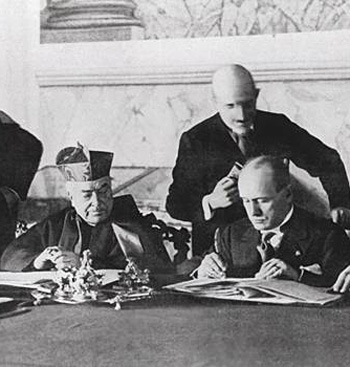 Then, in June of 1930, in the face of the growing threat of Communism, Pope Pius XI decreed that the prayers were to be said for the freedom of the Catholic Church in Russia and, hence, they began to be called Prayers for the Conversion of Russia. His words: "The enemy has not given up his work. There is need still of that particular form of prayer, perhaps even more need than ever." (The Ecclesiastical Review, vol. 83, October 1930, p. 421)
Then, in June of 1930, in the face of the growing threat of Communism, Pope Pius XI decreed that the prayers were to be said for the freedom of the Catholic Church in Russia and, hence, they began to be called Prayers for the Conversion of Russia. His words: "The enemy has not given up his work. There is need still of that particular form of prayer, perhaps even more need than ever." (The Ecclesiastical Review, vol. 83, October 1930, p. 421)
In his Apostolic Letter to the Russian People of July 7, 1952, Pope Pius XII condemned Communism and, then, confirmed and renewed the command to say the Leonine Prayers after Low Masses. He did so with good reason, for the Russian Bear was crushing Catholics pitilessly behind the Iron Curtain.
Pius XII called upon the Church to pray for the conversion of Russia after he personally consecrated the people of Russia to the Immaculate Heart in 1952, but he did not offer this consecration in union with all the Bishops.
Thus, while the order of the Blessed Mother for the Pope to consecrate Russia to the Immaculate Heart of Mary along with all the Bishops was not fulfilled, the Leonine Prayers were at least a reminder to faithful Catholics of the errors and dangers of Communism.
Leonine Prayers abolished
This was the state of things until Vatican II. Suddenly its use was dropped altogether as a consequence of the so-called Vatican-Moscow Pact or Pact of Metz. In this sinister pact, the Vatican and the Schismatic Russian Church came to an agreement. According to its terms, the Russian “Orthodox Church” agreed to send observers to Vatican II under the condition that no condemnation whatsoever of Communism be made there.”
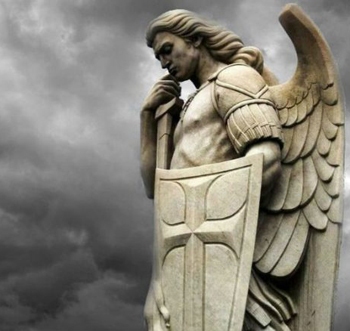 Since the Leonine Prayers were a reminder that Russian Communism was conducting a persecution, they were among the first things to go.
Even before the Council closed, the Sacred Congregation of Rites, in an instruction called
Inter Oecumenici, issued the brutal phrase: “The Last Gospel is omitted; the Leonine Prayers are suppressed.” (item f)
Since the Leonine Prayers were a reminder that Russian Communism was conducting a persecution, they were among the first things to go.
Even before the Council closed, the Sacred Congregation of Rites, in an instruction called
Inter Oecumenici, issued the brutal phrase: “The Last Gospel is omitted; the Leonine Prayers are suppressed.” (item f)
What is certain is that Satan did not cease his activity in 1964. The errors of Russia have continued to spread – even inside the Holy Church – and the Catholic people have become oblivious to the danger and tragedy of not fighting Communism or heeding Our Lady's request to consecrate Russia to her Immaculate Heart.
Today there are reports that even some traditional priests do not say the prayers after Mass for the conversion of Russia, either eliminating them completely or not mentioning Russia, again, in the “spirit of Vatican II.”
The Leonine Prayers are a very important part of responding to the needs of the Church in our times, when open Satanism is on the rise and the errors of Communism continue to spread unabated. Their abolition was an important step in the progressivist reform of the liturgy.
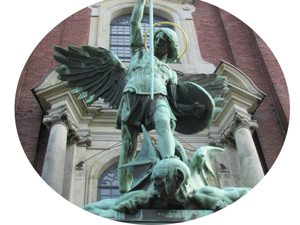

These prayers have a very significant history, unknown to many Catholics today, since they are no longer said in the Novus Ordo liturgy that replaced the Roman Tridentine rite. It is worthwhile to know and appreciate their importance.

History
The prayers after the Low Mass are public intercessory prayers for the needs of the Church. Although they are referred to as the Leonine Prayers, they did not totally originate with Pope Leo XIII, after whom they are named.
In 1859 Pope Pius IX ordered public prayers – specifically, three Hail Marys, the Salve Regina, a versicle and a collect – to be recited after Mass in all churches in the Papal States, which were under attack by revolutionary leaders at the service of Masonic secret societies. In fact, Rome fell to the revolutionaries, the Papal Territories were seized by them and Pope Pius IX was allowed to stay at the Vatican. In face of this situation the Pope declared himself to continue to dwell there as a "prisoner."

St. Michael appears and casts the demons into Hell
Two years later, in 1886, Pope Leo XIII added the Prayer of St. Michael to these prayers recited after Mass. This came as the result of a vision he had one day after celebrating a Mass where he saw Satan and his cohorts wreaking destruction in the Holy Church. In the midst of the horror, St. Michael the Archangel appeared and cast Satan and his legions into the abyss of Hell.
Soon afterwards Pope Leo XIII composed the Prayer to Saint Michael, later shortened to the form we all know. He added this prayer to the prayers of Pius IX after Mass and ordered that they should be said after all Low Masses as a protection for the Church against attacks from Hell. This is how the prayers after Mass took the name Leonine Prayers.
It was Pope St. Pius X who ordered in 1904 that at the conclusion of the Leonine Prayers a threefold invocation be said, "Cor Jesu Sacratissimum, miserere nobis" [Most Sacred Heart of Jesus, have mercy on us].
For the conversion of Russia
Peace was finally established between the Pope and Italy with the signing of the Lateran Treaty in 1929. The Leonine prayers continued to be said after Low Masses.

Card. Gasparri signs the Lateran Concordat on behalf of the Pope as Mussolini looks on
In his Apostolic Letter to the Russian People of July 7, 1952, Pope Pius XII condemned Communism and, then, confirmed and renewed the command to say the Leonine Prayers after Low Masses. He did so with good reason, for the Russian Bear was crushing Catholics pitilessly behind the Iron Curtain.
Pius XII called upon the Church to pray for the conversion of Russia after he personally consecrated the people of Russia to the Immaculate Heart in 1952, but he did not offer this consecration in union with all the Bishops.
Thus, while the order of the Blessed Mother for the Pope to consecrate Russia to the Immaculate Heart of Mary along with all the Bishops was not fulfilled, the Leonine Prayers were at least a reminder to faithful Catholics of the errors and dangers of Communism.
Leonine Prayers abolished
This was the state of things until Vatican II. Suddenly its use was dropped altogether as a consequence of the so-called Vatican-Moscow Pact or Pact of Metz. In this sinister pact, the Vatican and the Schismatic Russian Church came to an agreement. According to its terms, the Russian “Orthodox Church” agreed to send observers to Vatican II under the condition that no condemnation whatsoever of Communism be made there.”

As storm clouds grow in the Church, the St. Michael Prayer is abandoned
What is certain is that Satan did not cease his activity in 1964. The errors of Russia have continued to spread – even inside the Holy Church – and the Catholic people have become oblivious to the danger and tragedy of not fighting Communism or heeding Our Lady's request to consecrate Russia to her Immaculate Heart.
Today there are reports that even some traditional priests do not say the prayers after Mass for the conversion of Russia, either eliminating them completely or not mentioning Russia, again, in the “spirit of Vatican II.”
The Leonine Prayers are a very important part of responding to the needs of the Church in our times, when open Satanism is on the rise and the errors of Communism continue to spread unabated. Their abolition was an important step in the progressivist reform of the liturgy.

St. Michael Church in Hamburg, Germany

Posted May 31, 2019















